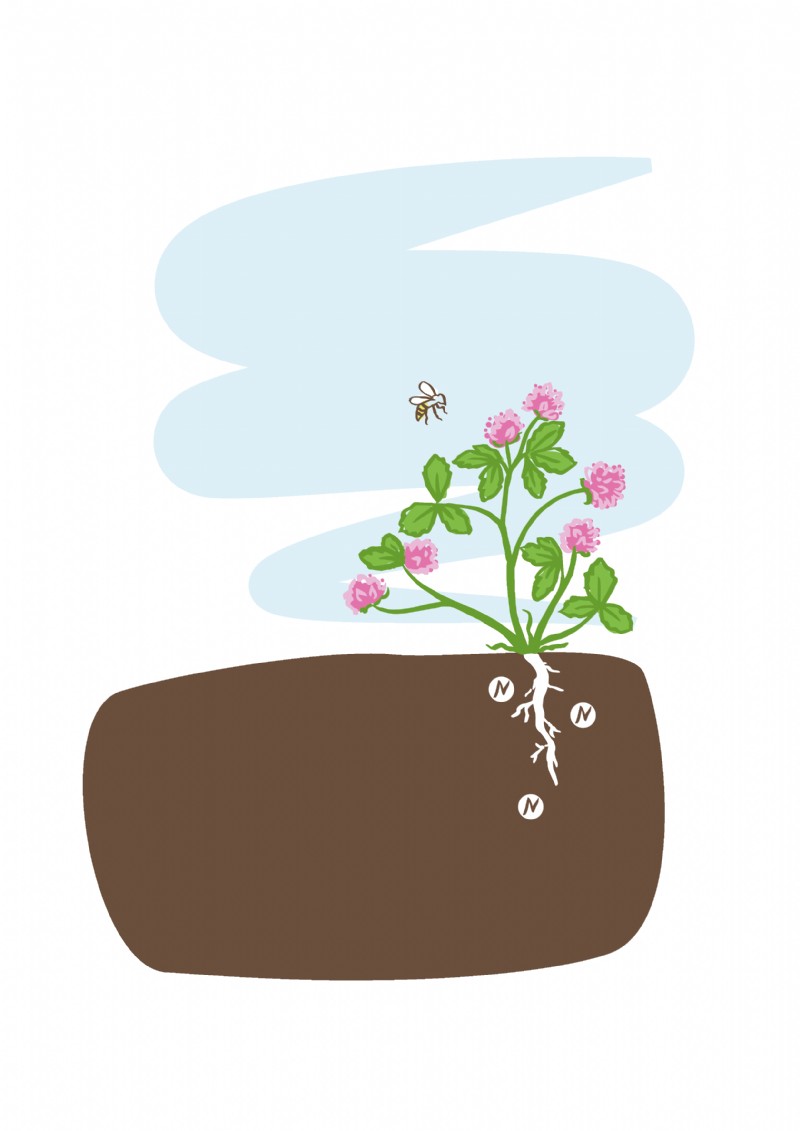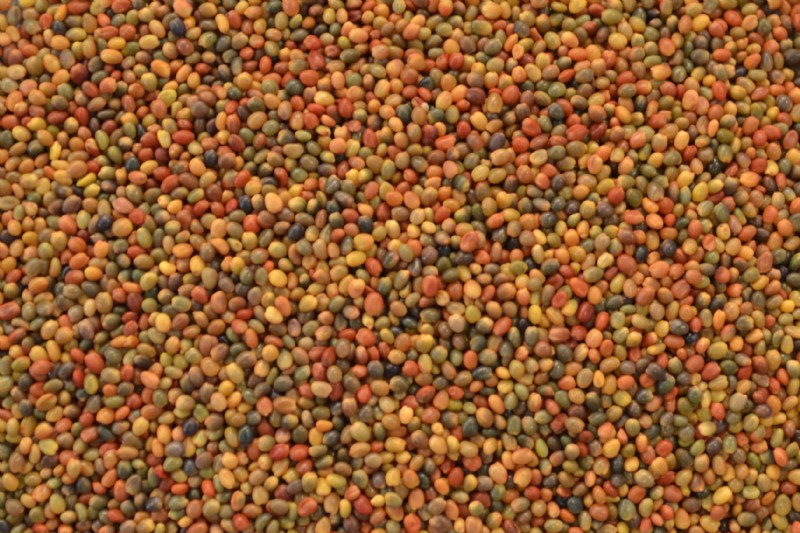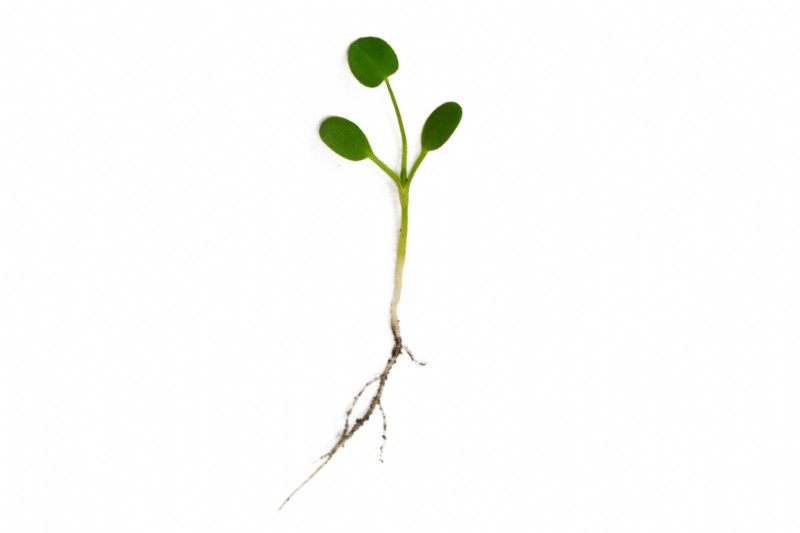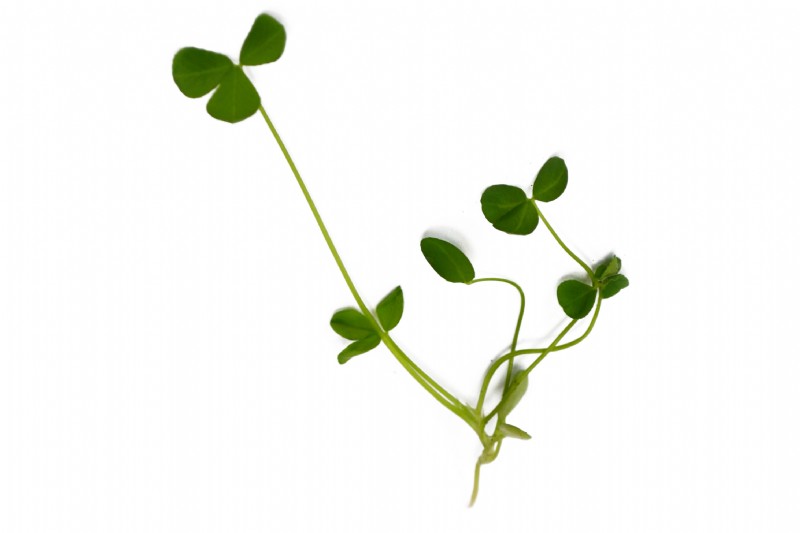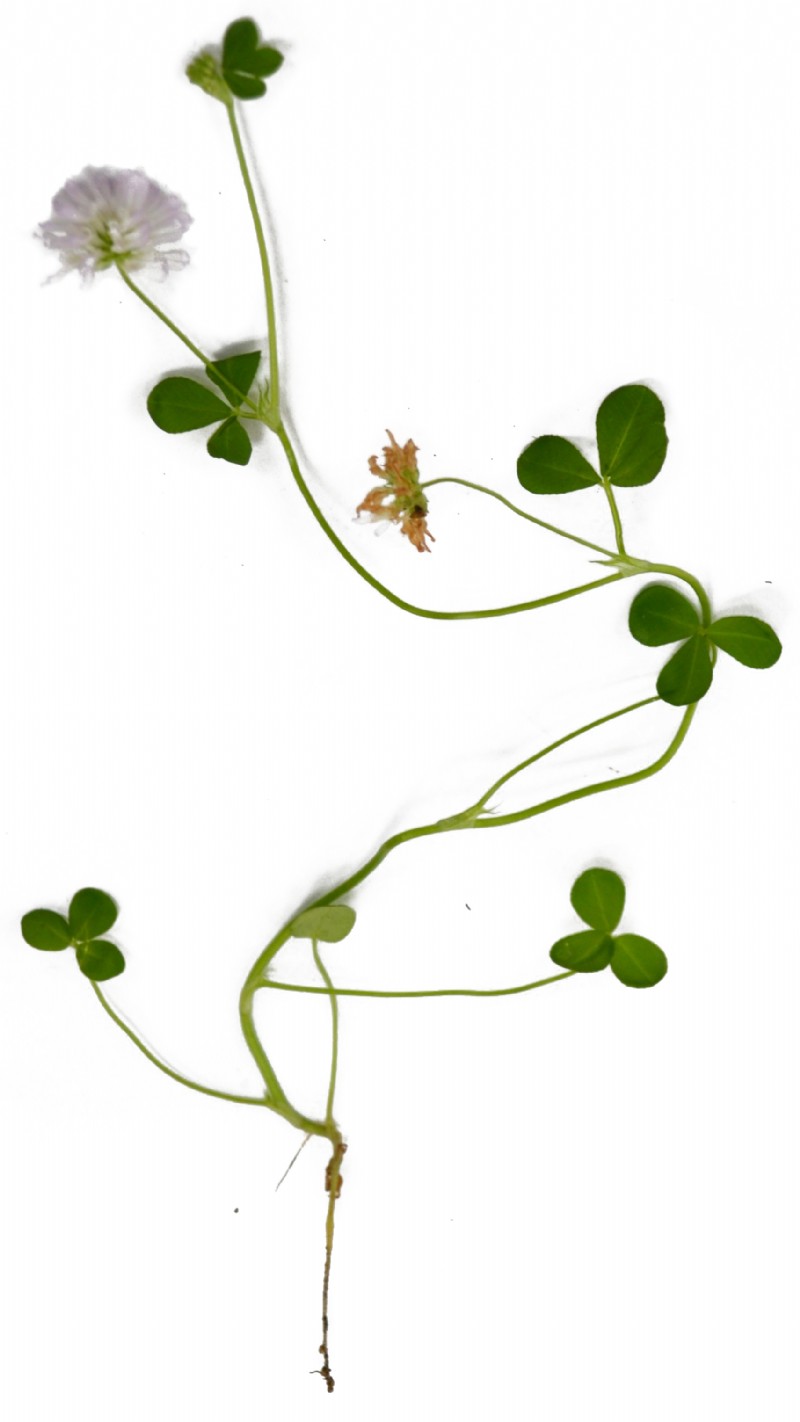Persian Clover
A legume species which is widely used across Europe. It is less common in the UK but can be a useful forage plant. This short term annual fixes nitrogen and is capable of rapid growth making it ideal for providing a quick boost to soil fertility where there is a window of 5-9 months. When in flower Persian clover has a particularly pleasing smell.
Uses
Short term forage crops and soil improving green manures or cover crop mixtures.
Persistence
This species is an annual, It will start to die off by October from a spring sowing in April /May.
Strengths
In terms of a forage, the protein content is similar to other clovers and in mixture with grasses it will push up the overall protein by 2-3%. For a one year ley persian clover is a very good option and will be more productive than red clover for a short-term nitrogen boost. On emergence this plant produces very small leaves but after the 4-5 leaf stage expansion is rapid, producing a thick canopy that is extremely competitive against weeds.
Frost Tolerance
Persian clover is not particularly winter hardy, normally it is killed by the first couple of autumn frosts.
Yield
It can produce approximately 4t DM per ha with good moisture levels.
Sowing Rate Advice
4kg per acre / 10kg per ha.
Can be sown as a pure stand or combined with short term grassed and other annual clovers like crimson & berseem clover.
Mixture Sowing Rate Advice
0.5 - 2kg per acre / 1.25 - 5kg per ha.
This annual can be aggressive, so keep inclusion rates low if combining with less aggressive grass species.
Ideal Sowing Time
April - May is the ideal time for sowing in the spring, when soils are warming up. Persian clover will not establish under cold temperatures and is unlikely to be successful if sowing extends too far into September.
Management
Persian clover is usually only cut once and may be cut high at an early stage if weed control is required. If cut at full flowering there will be little regrowth, and often it will kill the plant off. Normally winter frosts will kill Persian clover before the following spring crop.
Distinguishing characteristics
Seed
Persian clover is rounded to oblong in shape, with a variation in colour ranging from yellow to green to brown. It has a smooth and shiny texture, approximately 2mm in length.
Seedling
The seedling produces a pair of oblong cotyledons joined by petioles to the stem. The first true leaf is more rounded, leading to the development of the trifoliate leaf shape.
Flowering Plant
The plant is normally light green in colour, with thick hollow stems.
The leaves are traditionally trifoliate, the lower leaves have smooth petioles, while the upper leaves may be attached directly to the stem (sessile).
Each leaflet is ovate or elliptical, with a rounded apex.
The flowers are notably fragrant, and pink, purple to mauve in colour.
Generally a shallow rooting species with good lateral root shapes.
Additional Info
Average number of seeds per kg 800 000. Average protein content 17-18%. It takes about 2 months to flower from sowing (8-10 weeks) and is about 3 weeks earlier than crimson clover to flower. There is a risk of bloat on pure clover stands, especially in cattle.
Works well with
Combining persian clover with other annual clovers like crimson and berseem can work well for a high biomass fertility building mixture. Similarly it can be combined with annual westerwold ryegrass for a high yielding silage crop.You can find Persian Clover in the following mixtures


